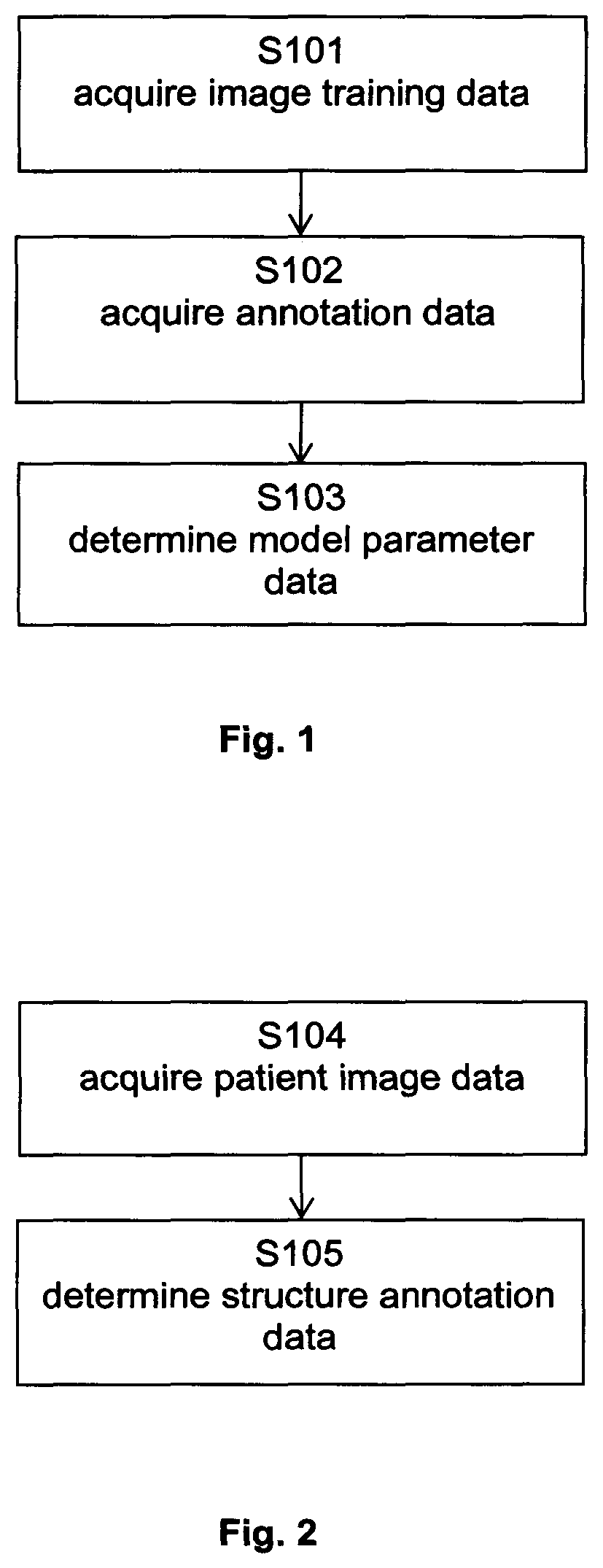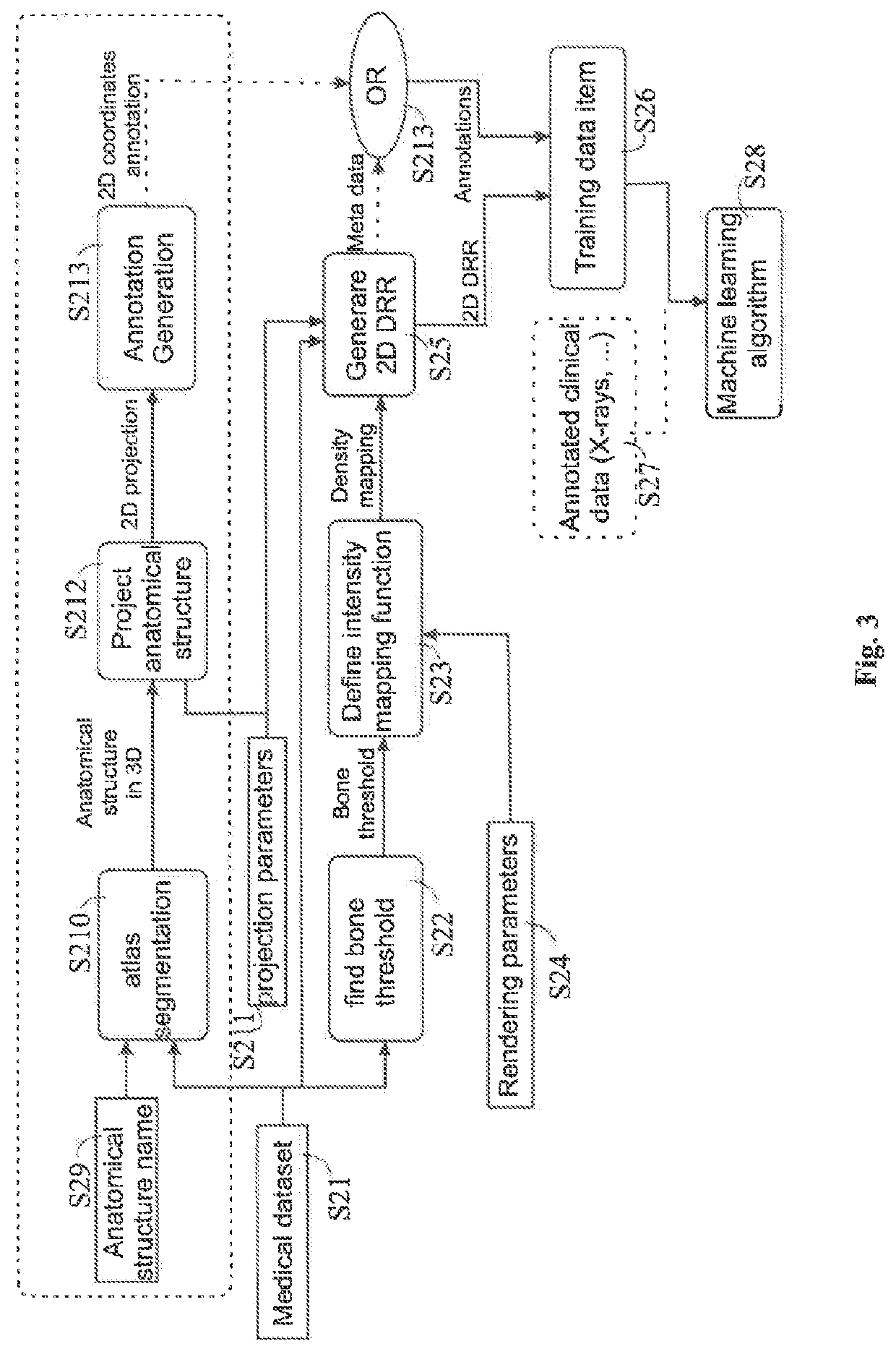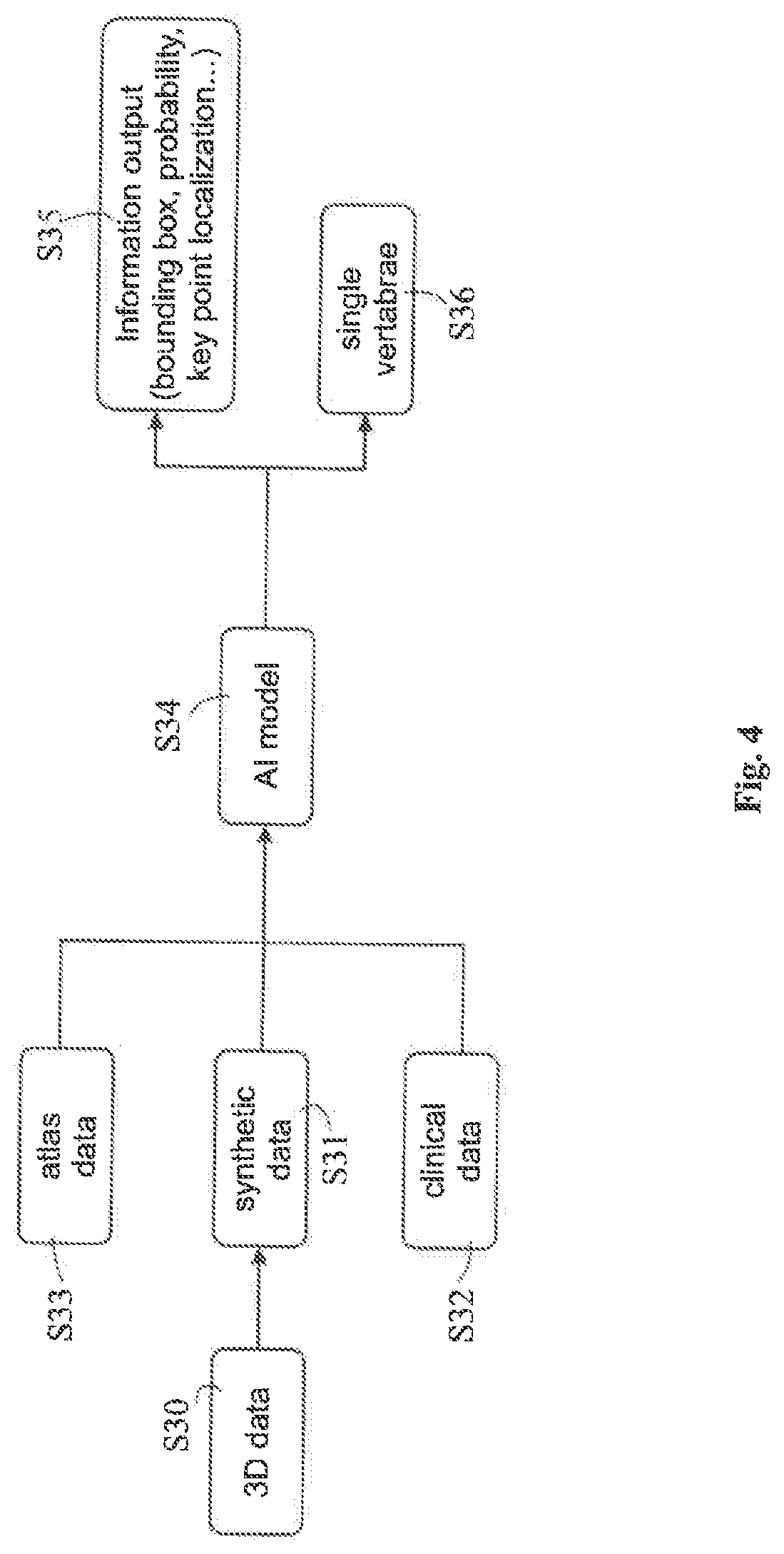Training a machine learning algorithm using digitally reconstructed radiographs
a machine learning algorithm and radiograph technology, applied in the field of computerimplemented methods of training likelihood-based computational models, can solve the problems of low degree of similarity, difficult training only on clinical data, and a lot of time, and achieve the effect of increasing the degree of similarity
- Summary
- Abstract
- Description
- Claims
- Application Information
AI Technical Summary
Benefits of technology
Problems solved by technology
Method used
Image
Examples
Embodiment Construction
[0007]In the following, a short description of the specific features of the present invention is given which shall not be understood to limit the invention only to the features or a combination of the features described in this section.
[0008]The disclosed method encompasses inputting medical DRRs together with annotation to a machine learning algorithm to train the algorithm, i.e. to generate adapted learnable parameters of the machine learning model. The annotations may be derived from metadata associated with the DRRs or may be included in atlas data which is matched with the DRRs to establish a relation between the annotations included in the atlas data and the DRRs. The thus generated machine learning algorithm may then be used to analyse clinical or synthesized DRRs so as to appropriately add annotations to those DRRs and / or identify the position of an anatomical structure in those DRRs.
General Description of the Invention
[0009]In this section, a description of the general feat...
PUM
 Login to View More
Login to View More Abstract
Description
Claims
Application Information
 Login to View More
Login to View More - R&D
- Intellectual Property
- Life Sciences
- Materials
- Tech Scout
- Unparalleled Data Quality
- Higher Quality Content
- 60% Fewer Hallucinations
Browse by: Latest US Patents, China's latest patents, Technical Efficacy Thesaurus, Application Domain, Technology Topic, Popular Technical Reports.
© 2025 PatSnap. All rights reserved.Legal|Privacy policy|Modern Slavery Act Transparency Statement|Sitemap|About US| Contact US: help@patsnap.com



